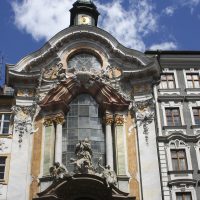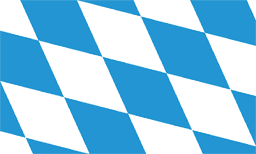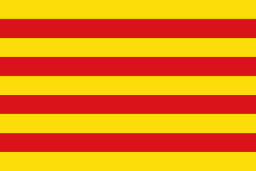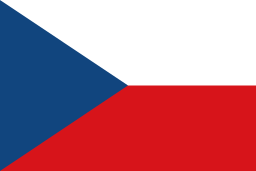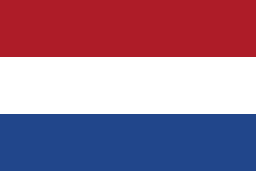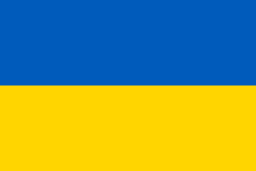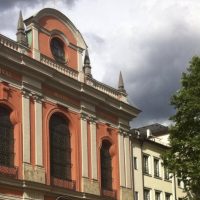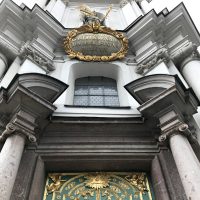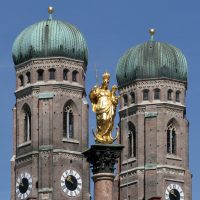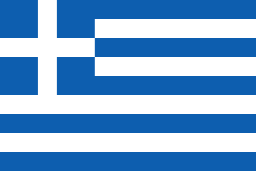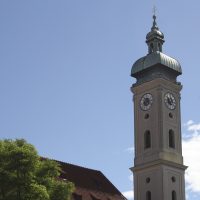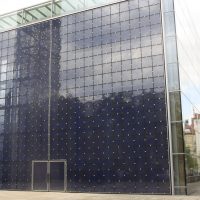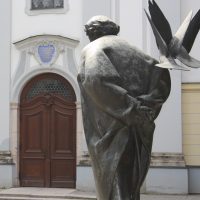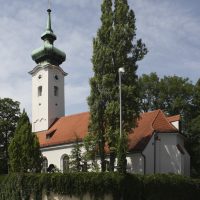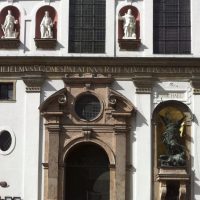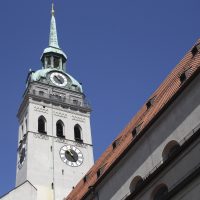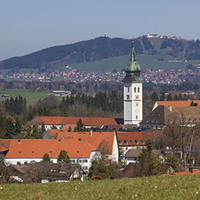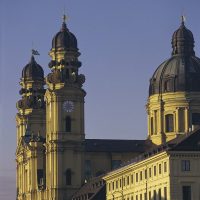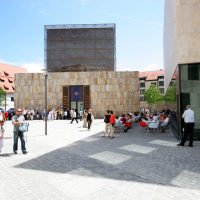The Asamkirche right in the Old Center is one of Munich‘s most impressive churches. Its builders, the brothers Cosmas Damian and Egid Quirin Asam, used every inch of the tiny interior to show their breathtaking craftsmanship. Gold-plated figures, ingenious stucco and fresco: The curtain rises to a truly divine spectacle of baroque magnificence.
Show Guides for Language:
Since the consecration of the High Altar on 13th May 1778, the Community Hall has also been unofficially called the Community Hall Church. The church is architecturally unique in that it is divided into an Upper and Lower Church. In the Lower Church is the tomb of the blessed Father Rupert Mayer, who courageously preached against National Socialism.
Show Guides for Language:
This church was designed by Giovanni Antonio Viscardi and built in Bavarian Baroque style between 1711 and 1718. During the Second World War, this was the only church in Munich’s city centre which was not damaged by bombing.
Show Guides for Language:
The Cathedral of Our Lady, the “Frauenkirche”, is the cathedral church of the Archbishop of Munich and Freising and Munich’s primary landmark. Its twin towers topped with their characteristic onion domes, so-called “Welsh Domes”, are visible from a great distance. A visit to the Cathedral is an essential part of every city tour.
Show Guides for Language:
The Church of the Holy Spirit is one of Munich’s oldest church buildings and located in the direct vicinity of the “Viktualienmarkt” food market. It was converted to Baroque and then to Rococo style. Its interior is decorated with high-quality frescoes and stucco work by the Asam brothers.
Show Guides for Language:
This modern church in Munich-Neuhausen was built between 1997 and 2000 after its predecessor had been destroyed by fire. It is of great interest for admirers of modern architecture, not least because of its futuristic cube shape with a 14-metre high blue glass front and transparent sides.
Show Guides for Language:
This monastery church was built in the 18th century. With a pioneering style, master builder Johann Michael Fischer created the first Rococo church in Old Bavaria, which played a decisive role in the development of ecclesiastical architecture in Bavaria. The oval interior is ornamented with masterworks by the Brüder Asam and Johann Baptist Straub.
Show Guides for Language:
The subsidiary church of St. Georg was formerly a village church and is located on the high banks of the River Isar in the north of the historic village centre of Bogenhausen. Inside are significant works of art by Johann Baptist Straub (high altar) und Ignaz Günther (pulpit and Corbinian altar). Today it is primarily known for its artists‘ graveyard, where many famous people are buried.
Show Guides for Language:
The parish- and pilgrimage church of Munich Ramersorf is one of the oldest and most important pilgrimage churches of the Archdiocese of Munich and Freising. It is decorated with significant works of religious art by Erasmus Grasser and Jan Pollack.
Show Guides for Language:
Built in the 16th century, this church is dedicated to the Archangel Michael and its architectural style dates back to the time of transition between Renaissance and Baroque. Numerous architectural ideas were inspired by “Il Gesù”, the Roman mother church of the Jesuit order. As a result, the Munich Church of St. Michael, which also was an eminent bastion of the Catholic Counterreformation, became the model for many Baroque churches in the German-speaking regions.
Show Guides for Language:
The Roman Catholic parish church of Saint Michael in Berg am Laim is one of the most magnificent and most significant ecclesiastical buildings within today’s city boundaries. The Late Baroque church was designed by the Bavarian master builder Johann Michael Fischer and built between 1735 and 1751 by order of the Elector and Archbishop of Cologne, Clemens August I of Bavaria.
Show Guides for Language:
The parish church located by Petersbergl in the historic city centre is one of Munich’s major landmarks and is the oldest house of God mentioned as “ze den Munichen” shortly after Munich was founded. It houses outstanding altars and religious works by renowned Munich artists in its magnificent interior. There is a fantastic view of the city from the tower, popularly known as “Old Peter”.
Show Guides for Language:
In Rottenbuch, not far from the world famous Wieskirche, the steeple of the former collegiate church and today’s parish church Mariä Geburt is tickling the white-blue Bavarian sky. With it’s magnificent Rococo interiour with stucco by Wessobrunn master Joseph Schmuzer and fresco paintings by Matthäus Günther it is one of the sacral jewels of the Pfaffenwinkel.
Show Guides for Language:
This collegiate church was the official court church and simultaneously the church of the Theatine order and burial place of the Wittelsbach dynasty. It was the first church north of the Alps to be built in the style of Late Italian Baroque. With its light facade the church lends Italian flair to the Odeonsplatz.
Show Guides for Language:
The Wieskirche is the summit of religious art in the Pfaffenwinkel region. In the pilgrimage church and UNESCO cultural heritage site the Brüder Asam heightend the style of Rococo to its most triumphant and grant the beholder a glimpse into the paradise of heaven.
Show Guides for Language:
A pilgrim’s route through Munich’s city centre. These circular walks include not only Roman Catholicism and Protestantism but also the Jewish community and the role of the Orthodox Church in Munich.
Show Guides for Language:
